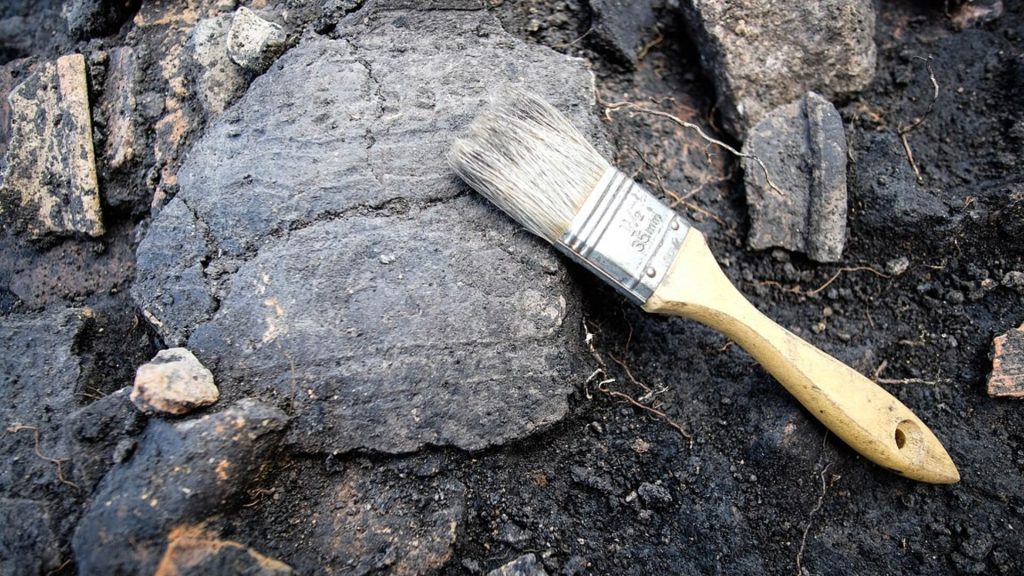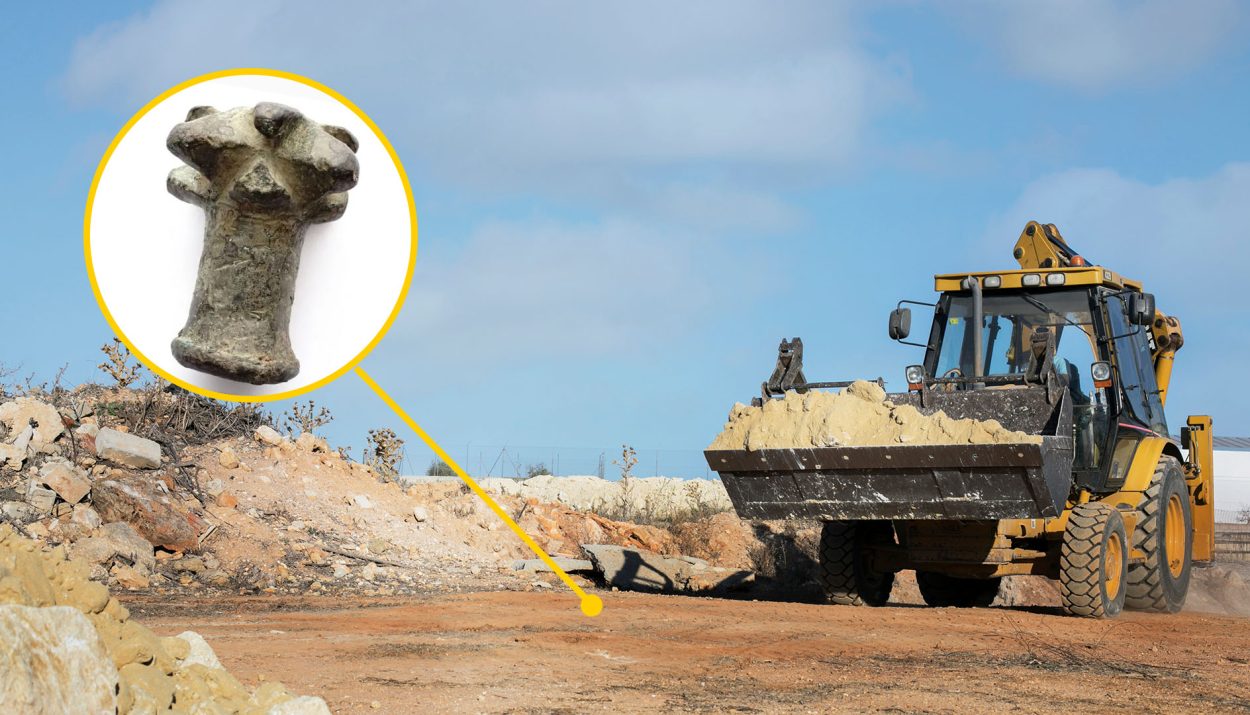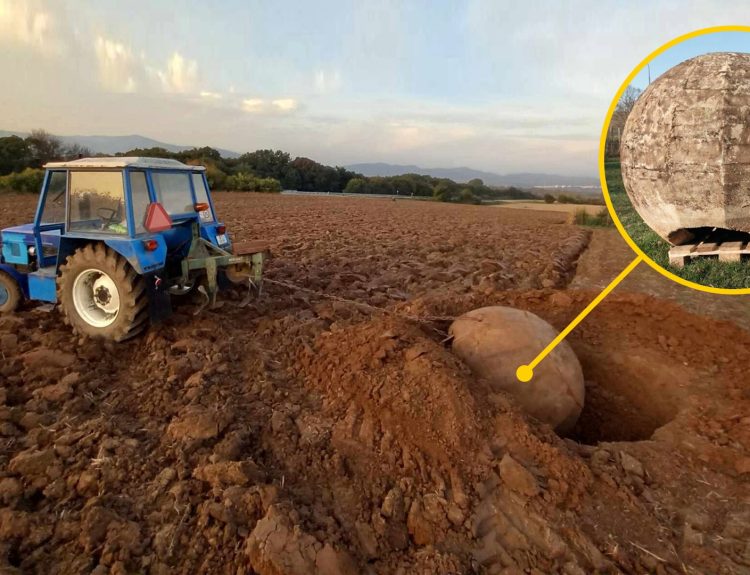When the Boltuc family of Wilkow, Poland, needed to improve and expand the driveway leading back to the family barn, they ordered several loads of dirt to be brought in. The truck driver dumped the dirt in a mound in the family’s driveway and left the Boltuc family to the task of spreading the fill dirt, building up some parts of the driveway and patching holes in other parts.
Twelve-year-old Witold Boltuc was helping his parents with the construction project … but mostly, he was just playing in the dirt as boys love to do. The eagle-eyed youngsters soon spotted something in the dirt. That object, it turns out, was a relic of Poland’s medieval past.
A Medieval Weapon Made of Bronze
The item Witold Boltuc pulled from the fill dirt looked old and well-worn. It was about three inches long and appeared to be made of bronze. The boy was sure he had found something remarkable, so he immediately showed his parents.

Witold’s parents agreed that the object looked to be quite old. They wondered what it was and if it had any historical value. They knew where to take the item to get the answers they were looking for … the University of Lublin.
One of the Newest Departments at the University of Lublin
As one of the University of Lublin’s newest academic schools, the Institute of Archaeology was officially established in September 2021. According to the University, which is also called the Maria Curie-Sklodowska University, the newly founded archaeology department is devoted to prehistoric and early medieval history of Poland.

The researchers at the Institute of Archaeology include many experienced archaeologists who have come to the University from other well-respected educational institutions. The faculty and students conduct research at sites across Poland and Eastern Europe. Surely, they could identify the bronze artifact young Witold found.
A Medieval Weapon
And yes, the professors at the University of Lublin examined the find and declared it to be the head of a medieval mace. Based on the shape of the knobs – which form small pyramids – the experts believe the medieval mace was made between the 12th and 14th centuries.

During that time period, maces were a common weapon in Eastern Europe. They were especially prevalent in the area of modern-day Ukraine. Mace heads were not simply used as weapons of war; they were also status symbols used to show off power and wealth.
Medieval Poland
Although we often think of medieval times as being barbaric, it was also a time of great political and cultural advancements. Poland – located on the cusp of Eastern and Western Europe – played a key role in the geopolitical framework of the continent.

During the medieval era, Poland operated as a feudal monarchy called the Kingdom of Poland. To maintain its power and prestige, the king relied on feudal lords – regional government heads – to keep peace, impose taxes, and protect the borders. Medieval Poland was not all about warfare. Most of the country’s grand churches and cathedrals were constructed during this time.
What Is a Medieval Mace?
Warriors in medieval times had more weapons in their arsenal than just swords and arrows. The mace could get the job done when swords and arrows proved to be ineffective. Why is this? Because maces – basically solidly built metal clubs with spiked heads – could smash and bash the enemy even if he was wearing a suit of armor.

Between the 12th and 16th centuries, plate armor became a battlefield staple. It protected the wear from the slashing blade of a sword or dagger and arrows could not penetrate them. The best way to take down a warrior in a suit of armor was to inflict blunt force trauma. The mace was perfect for this situation, so it became a favorite weapon for soldiers and knights.
A Fascinating Example of a Medieval Mace
According to the scholars at the University of Lublin, the bronze mace that Witold Boltuc pulled from the dirt pile is a fascinating example of medieval weaponry. Although it is not known when humans first started using clubs – wooden or metal – as weapons, it is clear that this simple yet effective tool evolved over time.

The pyramid-shaped protrusions on the head of Witold’s mace were obviously intended to inflict more harm on its victims. Spikes or protrusions on maces came about as medieval weapon makers sought ways to combat battle armor. In fact, as suits of armor became more advanced, so did maces.
Tracking the Origin of Witold’s Mace Head
After identifying the object Witold Boltuc discovered as a medieval mace head, the next puzzle was tracking down where the weapon came from. It wasn’t too difficult to reach out to the company who supplied the Boltuc family with the fill dirt for their construction project.

According to the company, the fill dirt was scooped up from a location about 200 miles away from the Boltuc family. The dirt came from Klodnica. That was significant because there were two known medieval settlements in that area.
Medieval Settlements Along the Vistula River
Klodnica was once home to an early medieval stronghold that thrived during the 10th and 11th centuries. Excavation work at this site has unearthed evidence that this location along the Vistula River also served as one of Eastern Europe’s largest grain deposits.

Four strongholds and several settlements were also found in this region. One of them, located at Zmijowiska, was fortified with a large, circular rampart. This site was also occupied in the 11th century. It is likely that Witold’s bronze mace belonged to a warrior living at one of these locations.
What Will Become of Witold’s Mace?
Mace heads tell part of the story of Poland’s medieval history. The pyramid-shaped spikes are dented and bent … could it be that this weapon was used in battle? It is a distinct possibility, although the artifact may have been damaged as it lay buried in the ground for centuries.

The chance discovery of this mace head helps showcase the unique and interesting past of not only the Lublin region, but all of Poland. Most likely, Witold’s mace head will be presented to the Nadwislanskie Museum in Kazimierz Dolny and put on display there.






